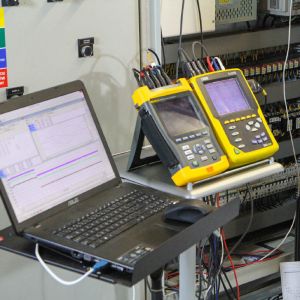Power system quality measurements
Why monitor power system quality?
We provide the ability to expose problematic values that could result in damage to electrical installations or system malfunctions.
Non-destructive measurement methods are used, employing current and voltage probes without shutting down the electrical installations themselves.
Poor system quality causes different sources of interference, such as with the generators, thyristor-driven drives, imbalanced phase loading on the rectifiers, electrical semiconductor devices, electrical traction, variable frequency drives, induction and arc furnaces.
These disturbances are responsible for overheating in the transformers, the overloading of lines, damage to sensitive equipment, terminal corrosion, undesirable resonance phenomena in the system, losses in capacitors and rotating equipment, the defective operation of control devices and circuit protection elements, noise in the motors and other devices, blinking lights, active power losses, a reduction in equipment durability and an increase in the error of measurement and control devices.
Measured parameters
- supply phase voltage, current and their deviations,
- total harmonic distortion – crest factor,
- harmonic analysis of current and voltage,
- asymmetry and harmonic voltage components.
Results from the diagnostics
- measures to mitigate undesirable system conditions,
- identification of instantaneous power system parameters (voltages, currents, reactive power, apparent power, cos φ),
- analysis of electrical system conditions (sizing of circuits, circuit protection, definition of maximum power),
- detection of the occurrence of undesirable higher harmonic frequencies,
- reactive power compensation measures.

















